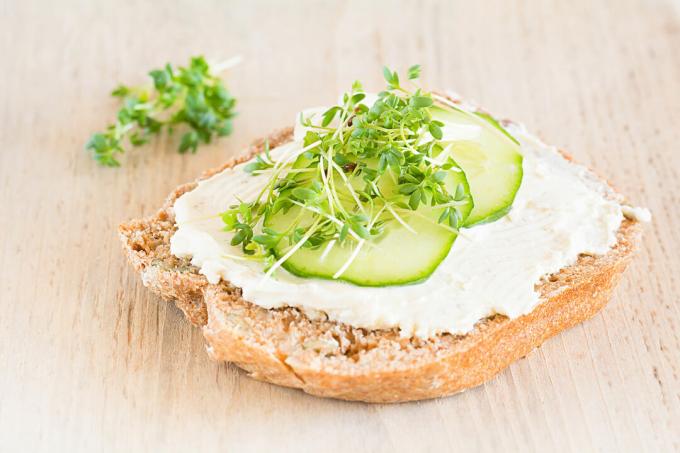The garden cress is good for decorating and contains valuable ingredients. Learn how to properly harvest and use garden cress here.

It is amazingly easy to use the garden cress (Lepidium sativum) to cultivate all year round even on the windowsill. At a temperature of 15 ° C, the light germ develops after just one day and is ready for consumption after four days. This is a record-breaking speed from sowing to the plate. We'll show you what to look for for a durable harvest and successful use of this high-speed herb.
Harvest garden cress
Once the cotyledons of the garden cress have fully developed, they can be harvested. At a temperature of 15 to 20 ° C, this is already the case about four days after sowing. The seedlings are simply cut off with scissors just above the substrate surface. Garden cress, however, should only be harvested until it blooms. As soon as the flowers form, the delicate cruciferous plant loses its characteristic aroma. The garden cress should only be cut if it is to be used directly. If the cress is only lying around for a few hours, it will also lose its spicy note. In order to be able to use fresh cress permanently, think about a regular new sowing (e. B. every two weeks) after the cress. In this way you can ensure a steady yield of garden cress.
Use garden cress
A classic is a fresh slice of bread garnished with cheese spread and freshly harvested, spicy garden cress. The characteristic peppery note also rounds off fresh salads and many other dishes in the taste. The mustard glycosides contained in the cress are responsible for this. But in addition to being spicy and looking good, garden cress has other useful properties. With the so-called cress test, a simple and quick measurement of the air pollution with pollutants is possible. The growth of unpolluted seedlings is compared here with that of cress seedlings grown in a contaminated environment. This comparison enables conclusions to be drawn about the level of harmful emissions in the air.
Garden cress also contains high concentrations of vitamin C, iron, calcium and folic acid. Cultivated on the windowsill, thanks to these valuable ingredients, the garden cress can be an energizing addition to the diet, especially in winter. Because fresh and nutritious fruit and vegetables are often in short supply at this time of the year. As studies have already confirmed, regular consumption of garden cress can also help break bones grow together faster.




